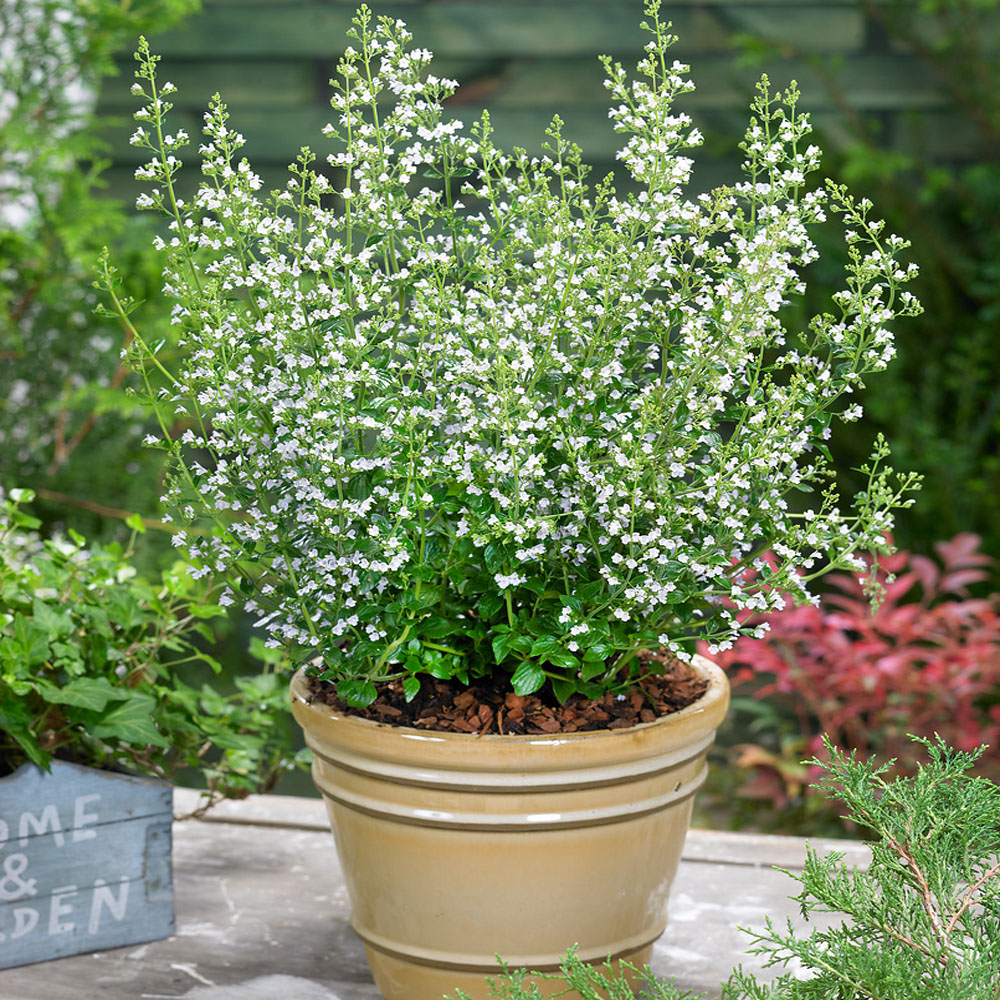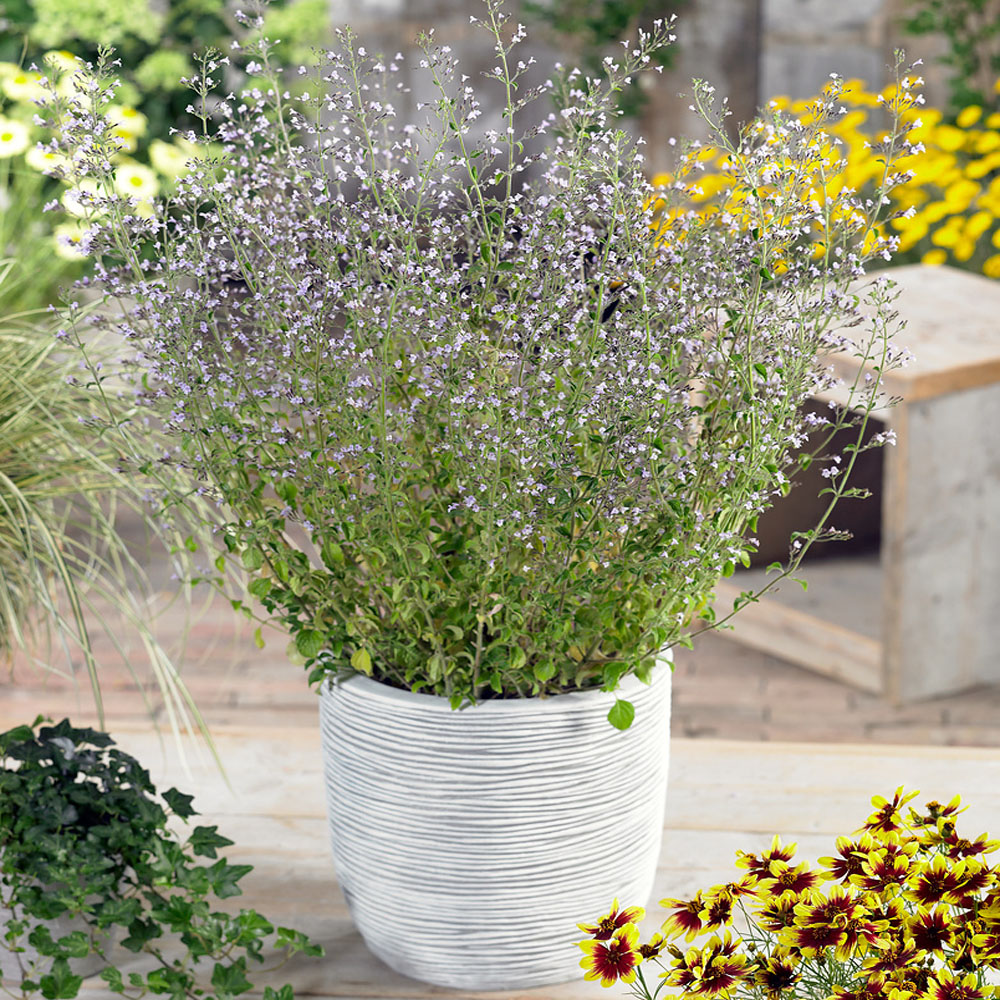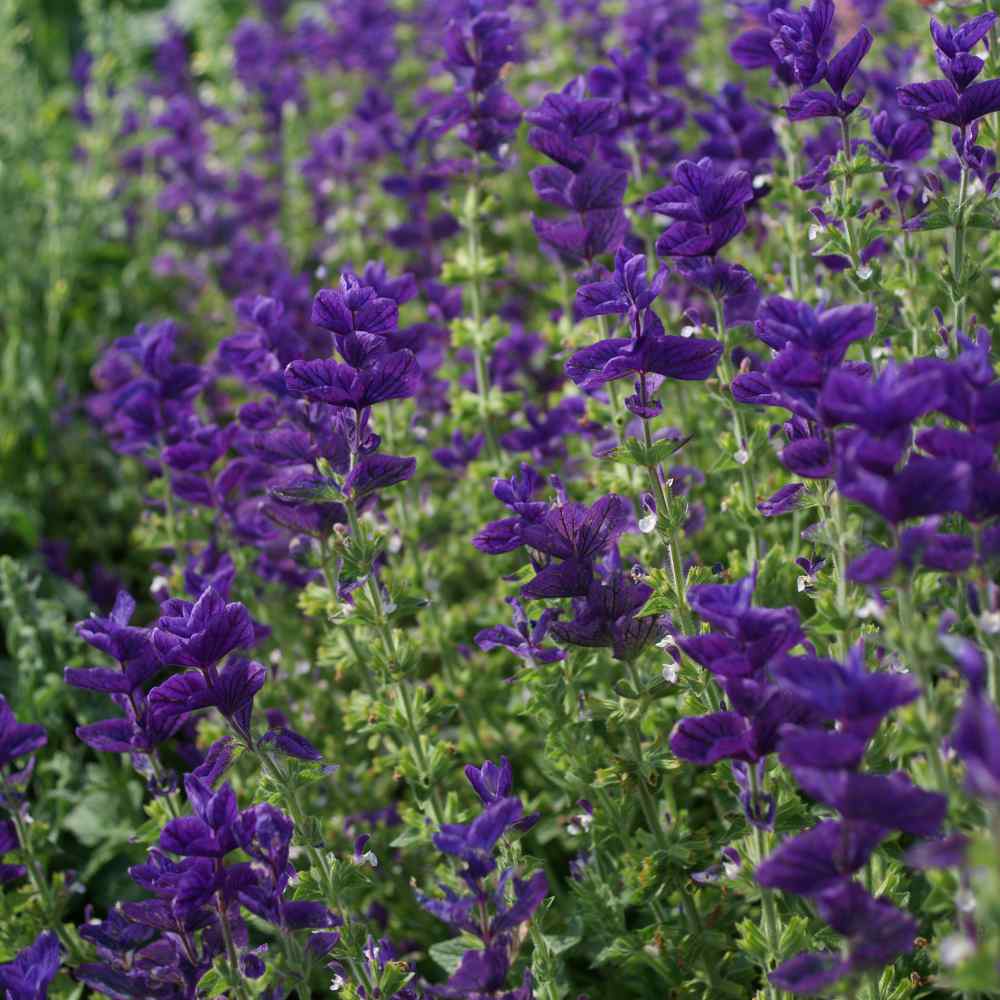
Calamintha Planting Guide
Quick Facts About Calamintha
Calamintha is a perennial flowering plant that grows in USDA zones 5 through 7. It is rhizomatous, and has a strong spreading habit that produces wide areas of foliage and blooms. An excellent choice for edging walks, patios, and herb gardens, and also serves well as an informal ground cover.
Planting Time
If starting indoors (ideal if you want to get a jump on the growing season), sow the seeds into small pots or packs 8 weeks before the last expected frost. If starting directly outdoors, sow the seeds into a prepared seedbed in an area of full sun in early to mid spring after danger of frost.

Planting Location
Plant in full sun with dry to medium moisture, well-drained soil.
How to Plant Calamintha
- If starting indoors (ideal if you want to get a jump on the growing season), sow the seeds into small pots or packs 8 weeks before the last expected frost. If starting directly outdoors, sow the seeds into a prepared seedbed in an area of full sun to partial shade in early to mid spring after danger of frost.
- Plant 2 - 3 seeds per cell or plant and lightly cover with 1/8 inch of soil.
- Keep moist until germination.
- Keep warm at 68F.
- Once seedlings sprout, ensure they receive plenty of light by placing them on a sunny windowsill or positioning them 3-4 inches below fluorescent plant lights that are switched on for 16 hours daily and off for 8 hours at night. Adjust the lights as the plants grow taller. Avoid using incandescent bulbs as they generate excessive heat. Remember, most plants need a period of darkness to thrive, so do not keep the lights on for 24 hours.
- You can transplant outside when the last frost has passed at the earliest and the calamint is at least five inches. Try and wait until early summer if you can and make sure the root system is strong.

Care And Maintenance
- If you live in an area with scorching summers, think about offering partial shade and watering more often. Alternatively, you can plant in a container and relocate the plant to a cooler, shadier location when the weather gets hot.
- Keep weeds in check throughout the growing season by cultivating regularly or using mulch. Weeds can deprive plants of water, space, and nutrients, so it's essential to manage them effectively to prevent their seeds from sprouting.
- Mulches play a crucial role in preserving soil moisture and stabilizing soil temperatures.
- Container planting is an option if you want to prevent root spread. These plants work well as border plants, but require regular trimming and monitoring to prevent unwanted spreading.
- Water your plants consistently throughout the summer. While calamint can withstand drought once it has taken root, it thrives in moist soil. Allow the soil to dry between watering sessions, but when the top inch dries out, it's time to water again.
- Calamint generally does not require fertilization unless your soil is of poor quality. If you notice the plant lacking nutrients or facing challenges, consider applying a balanced fertilizer once at the start of spring and ensure thorough watering.
- Calamint does not need pruning, but if you want to control any spreading, deadheading is necessary. It's best to do this before the flowers begin to seed during the summer and fall.
- When the cold weather arrives, the stalks will wither and die. This is a natural process, and fresh stalks will grow back the following year. Trim any brown stalks left on the plant during springtime.



































